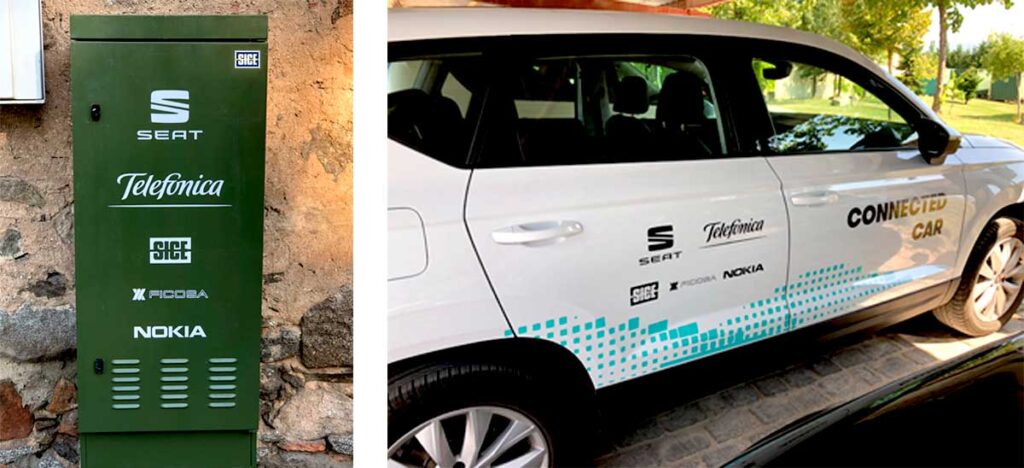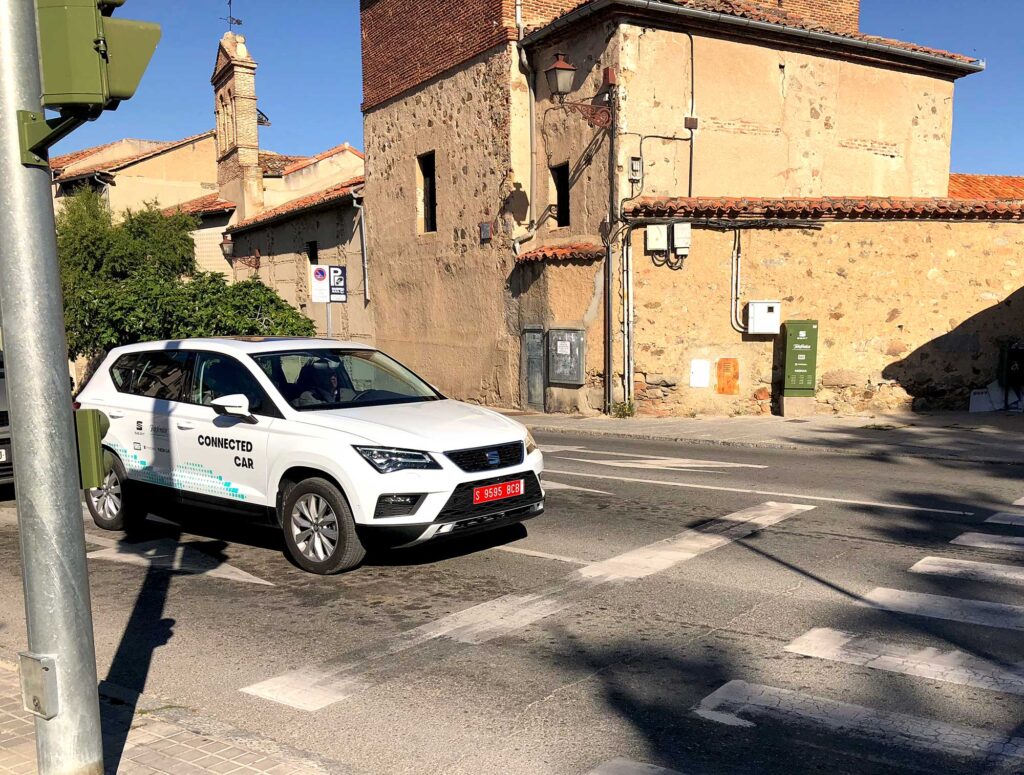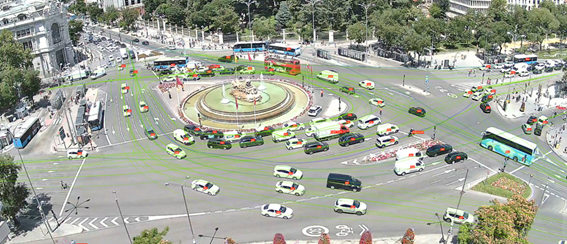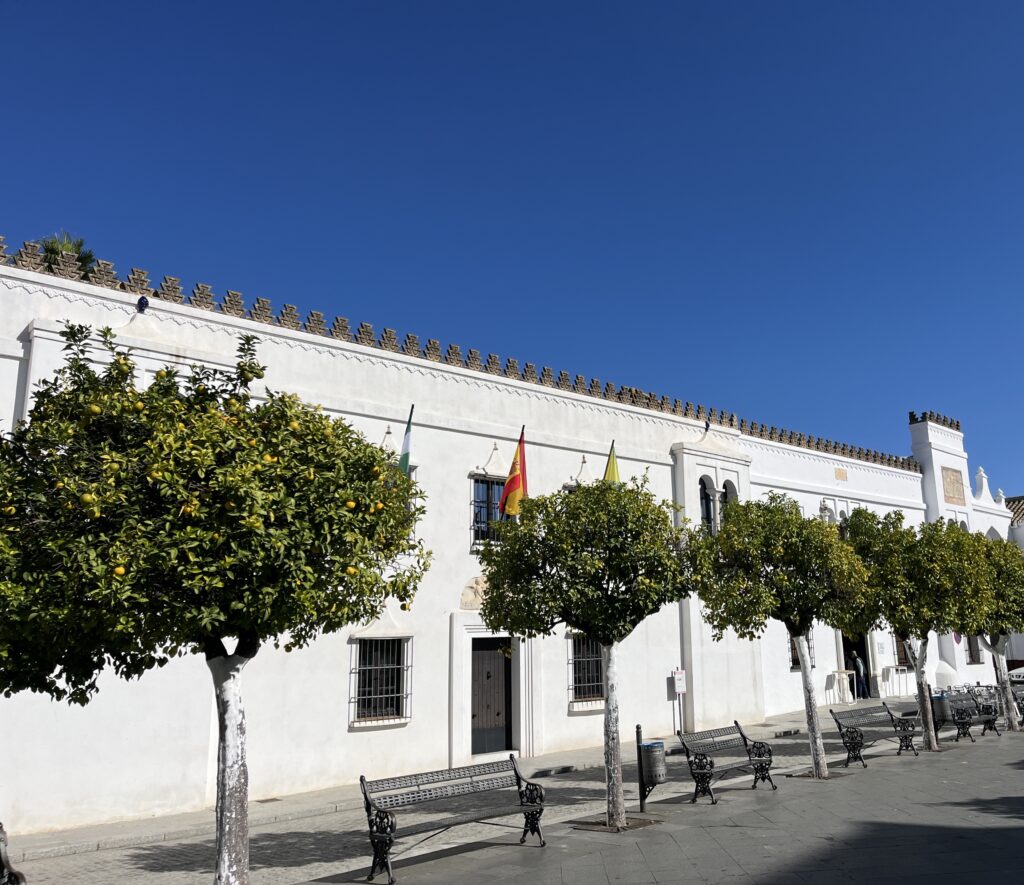SICE, manufacturer and supplier of road infrastructure, collaborated to provide connectivity to the selected traffic crossing by incorporating the IoT communications module to the traffic controller, as well as supplying the required detection sensors.
On July 24, SEAT and Telefónica presented the first real use case of assisted driving by communicating with road infrastructure through the mobile network via the C-V2X protocol.
Mayor Clara Luqueo and Councilman of Finance and Local Development José Bayón attended the presentation of the pilot project in the city of Segovia, which consisted of equipping both a vehicle and the road infrastructure with technology that allows them to exchange information.
In this first pilot, the installed system is able to warn the vehicle of the presence of a pedestrian in a cross walk at a blind curve on the right. If the driver shows his or her intention to turn by activating the blinker, the alert is activated on the vehicle’s dashboard.
The system also alerts the vehicle when an oncoming traffic light is about to turn red. The vehicle itself is able to calculate whether it has time to cross the traffic light based on its location, speed and trajectory. If not, it displays a warning message on the dashboard so the driver can perform a controlled braking maneuver.

This collaborative project between Telefónica, SEAT, SICE, FICOSA and the city of Segovia has proved to be the first step towards the normalization of V2X vehicular communications on mobile networks in the urban space. It is the first time that this type of protocol has been tested in Spain with real traffic in an urban environment, allowing vehicular communications and making use of existing mobile infrastructure.
SICE manufactured and supplied the road infrastructure, providing connectivity to the selected traffic crossing by incorporating the modern IoT (Internet of Things) communications module to the traffic controller and the required detection sensors.
The communications technology provided by Telefónica offers lower levels of latency thanks to improvements introduced in the LTE 4.9 (pre 5G) network. This technological advancement enables new assisted driving cases because, as the network evolves and latencies continue to drop, use cases will be able to advance towards cooperative driving and autonomous driving models.
For its part, SEAT provided the vehicle that was used: a modern Ateca model equipped with the latest connectivity technology and modified to be able to warn the driver using the dashboard. The initiative was also carried out in collaboration with FICOSA, the company responsible for manufacturing the vehicle’s onboard C-V2X communications device. Nokia also contributed by deploying a MEC (Multi-Access Edge Computing) server that functions as a communication platform between the vehicle and the road infrastructure, thus enabling the use of the LTE 4.9G (pre 5G) network.
This pilot project demonstrates the potential of combining the C-V2X protocol with information collected by sensors (pedestrian detection sensors and traffic control electronics themselves) to provide information about the vehicle’s surroundings, improving safety on roads and highways.






